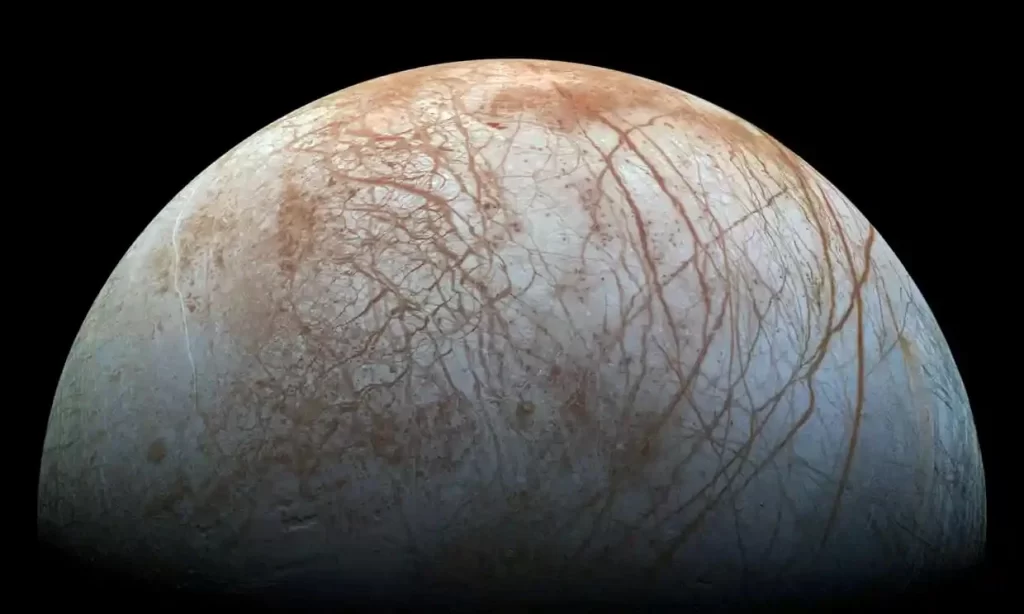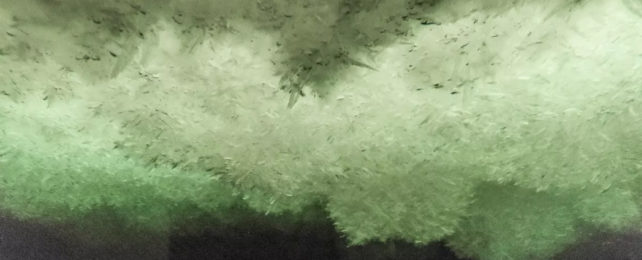Pure underwater snow that floats up rather than dropping down may contribute to the formation of the famed ice moon of Jupiter’s shell.
According to a recent study, which was published in the August issue of the journal Astrobiology, the frozen crust of Europa may have been partially formed by “frazil ice,” a fluffy buildup of ice crystals that similarly forms beneath ice sheets on Earth.

What Is This “Frazil Ice”?
This frazil ice contains only a small portion of the salt present in the ice that forms on the ice shelf, raising the possibility that Europa’s ice sheets contain less salt than previously thought.
According to study lead author Natalie Wolfenbarger, a graduate student researcher at the University of Texas Institute for Geophysics, “when we’re exploring Europa, we’re interested in the salinity and composition of the ocean, because that’s one of the things that will govern its potential habitability or even the type of life that might live there.”
Read More: Persistent Water Vapor in one Hemisphere of Jupiter’s moon Europa
The Fascinating Europa.
Europa is one among the solar system’s most fascinating objects for astrobiologists. According to NASA, the moon has a layer of ice that is 10 to 15 miles (15 to 25 kilometers) thick and sits on an ocean that is 40 to 100 miles (60 to 150 kilometers) deep. Even though Europa is just around 25% the size of Earth, the space agency estimates that its ocean on the surface might contain twice as much water as all of Earth’s oceans, making the moon an appealing location to look for extraterrestrial life.
The Europa Clipper
In order to examine the ice moon and determine whether it might be a potential home for life, a new NASA orbiter called Europa Clipper is scheduled to launch in October 2024. Scientists from the University of Texas at Austin are in charge of developing the ice-penetrating radar instrument for Europa Clipper, which will see through the ice sheet and the ocean immediately below it.
The researchers intended to comprehend the potential structure of the ice sheet as part of that endeavor.
They used Earth as an analogy, looking at the two primary ways that ice originates beneath the ice sheets of Antarctica. Congelation ice is one type that develops from the ice shelf’s surface.
How Are Europa And Antarctica Connected?
Similar to Antarctica, Europa most likely has a modest temperature gradient, which means that the temperature barely fluctuates with depth.
Wolfenbarger discovered that frazil ice is fairly prevalent in these circumstances, especially in areas where the ice thins in rifts or fractures. The presence of frazil ice on Europa could significantly alter the moon’s ice shell’s makeup.
Conclusion.
Frazil ice is much more pure than congelation ice and only contains 0.1 percent of the salt in the seawater it develops from, compared to congelation ice’s potential 10 percent salt content.
This low-salt ice may have an impact not only on the composition and durability of Europa’s ice crust, but also on the capability of the Clipper’s radar to penetrate the ice.
